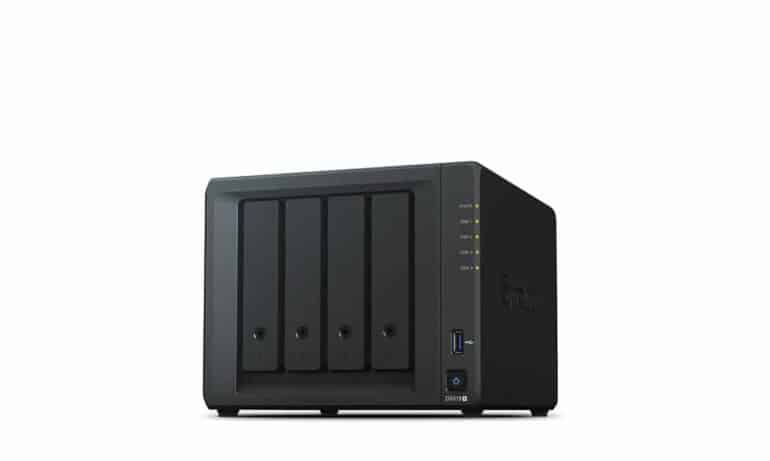Let’s find out –
Table of Contents
Design –
The DS918+ follows the usual Synology design language of the classic black box, which is, in its own way, very aesthetic, and since you will not be physically interacting with it a lot after the setup, its the perfect sort of form factor to tuck away in the corner of your room. There are four drive bays on the front, which slide out with ease, and there is a locking feature that allows you to keep them in place. Along with the drive bays, we have the power button, led indicators for drive status, and a standard USB 3.0 port.
At the back, we have two Gigabit Ethernet ports, an eSATA port, USB 3.0 port, and a power port. The eSATA port can be used to expand the DS918+ further with Synology’s expansion unit, taking the total number of drives up to 9.
The DS918+ is a four-bay NAS system with a combined storage of 64TB. Add in the Synology expansion unit, and this rises to a mind-boggling 144TB, which in today’s world, is more than enough storage for practically anything.
One of the more interesting features of the DS918+ is the support for a system cache through one or two M.2 SSD slots. Found on the bottom of the device, the slots behave in the following manner. If one SSD is installed then the NAS creates a cache for reading data only. If two are installed, then you unlock speed benefits when both reading and writing data to the NAS.
The DS918+ comes with 4GB of onboard DDR3L RAM, with an option to take it up to 8GB with a second memory module. Keep in mind, that you cannot simply insert the memory module while the DS918+ is at work. The procedure is to first, power down the DS918+, slide out the drives, and then insert the memory module. That said, it is very highly recommended that you upgrade the RAM to 8GB, especially if you are someone who uses a lot of heavy-duty applications.
Powering the DS918+ is a quad-core Intel Celeron J3455 processor, clocking in at 1.5GHz. It’s fast enough to run most of the applications on the NAS directly, but it is advisable to pick a single task for this NAS and stick with it, such as file sharing, VPN, etc.

